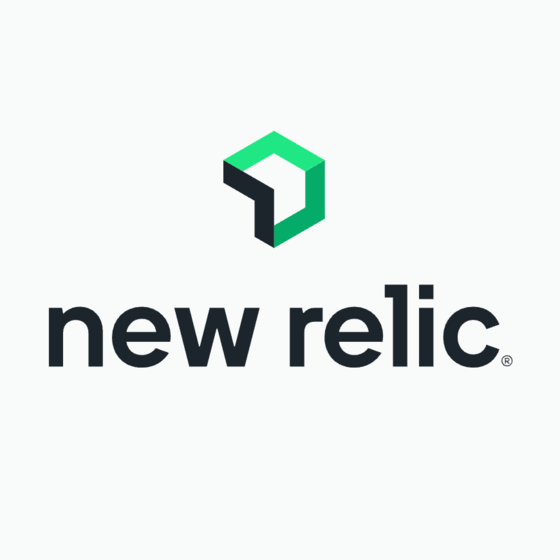Best Synthetic Monitoring Tools Shortlist
Here’s my shortlist of the best synthetic monitoring tools:
Our one-on-one guidance will help you find the perfect fit.
Synthetic monitoring helps you catch performance issues before your users do—but only if you choose a tool that fits your environment. Maybe you’re struggling with blind spots outside your core regions, or your current solution doesn’t test user flows deeply enough to flag real bottlenecks. Or maybe it’s just sending alerts without context, leaving your team scrambling to diagnose what went wrong.
I’ve helped engineering and SRE teams across a range of industries implement synthetic monitoring tools that don’t just run tests—but surface meaningful insights. I’ve tested everything from lightweight site checkers to advanced, scriptable platforms that integrate with CI/CD workflows and alerting systems.
In this guide, I’ll share the tools that actually deliver: helping you simulate real user behavior, track uptime and latency, and catch issues before they reach production.
Why Trust Our Software Reviews
We’ve been testing and reviewing SaaS development software since 2023. As tech experts ourselves, we know how critical and difficult it is to make the right decision when selecting software. We invest in deep research to help our audience make better software purchasing decisions.
We’ve tested more than 2,000 tools for different SaaS development use cases and written over 1,000 comprehensive software reviews. Learn how we stay transparent & check out our software review methodology.
Best Synthetic Monitoring Tools Summary
This comparison chart summarizes pricing details for my top synthetic monitoring tool selections to help you find the best one for your budget and business needs.
| Tool | Best For | Trial Info | Price | ||
|---|---|---|---|---|---|
| 1 | Best for global monitoring coverage | Free trial + demo available | Pricing upon request | Website | |
| 2 | Best for IT operations teams | 30-day free trial + demo available | From $395/year (billed annually) | Website | |
| 3 | Best for small businesses | Not available | Free to use | Website | |
| 4 | Best for real-time monitoring | Free trial + demo available | From $4.50/node/month (billed annually) | Website | |
| 5 | Best for website uptime monitoring | 30-day free trial + demo available | From $10/month | Website | |
| 6 | Best for developers | Free plan + demo available | Pricing upon request | Website | |
| 7 | Best for open-source enthusiasts | Free trial available | Pricing upon request | Website | |
| 8 | Best for quick setup | Free trial + demo available | From $29/month | Website | |
| 9 | Best for GitHub integration | Not available | Free to use | Website | |
| 10 | Best for API monitoring | 14-day free trial + demo available | From $64/month (billed annually) | Website |
-

Docker
Visit WebsiteThis is an aggregated rating for this tool including ratings from Crozdesk users and ratings from other sites.4.6 -

Pulumi
Visit WebsiteThis is an aggregated rating for this tool including ratings from Crozdesk users and ratings from other sites.4.8 -

GitHub Actions
Visit Website
Best Synthetic Monitoring Tool Reviews
Below are my detailed summaries of the best synthetic monitoring tools that made it onto my shortlist. My reviews offer a detailed look at the key features, pros & cons, integrations, and ideal use cases of each tool to help you find the best one for you.
Site24x7 is a synthetic monitoring tool designed for IT operations teams and businesses needing global monitoring capabilities. It tracks website performance and uptime across different geographic locations, ensuring your services are available worldwide.
Why I picked Site24x7: It offers extensive global monitoring coverage, making it ideal for businesses with a worldwide presence. Specific features include multi-location monitoring, which allows you to see how your services perform in different regions. You also get real-time alerts for outages and performance issues, helping you address problems promptly. Additionally, Site24x7 provides detailed reports that help you understand performance trends and make data-driven decisions.
Standout features & integrations:
Features include real user monitoring, which gives insights into actual user experiences. The tool also offers application performance monitoring to track and optimize application performance. With network monitoring, you can keep an eye on your entire network infrastructure.
Integrations include Amazon Web Services, Microsoft Azure, Google Cloud Platform, Slack, PagerDuty, Zapier, ServiceNow, Jira, Microsoft Teams, and Opsgenie.
Pros and cons
Pros:
- Multi-platform support
- Detailed performance reports
- Global monitoring locations
Cons:
- Limited customization options
- Learning curve for new users
New Product Updates from Site24x7
Amazon CloudWatch Logs Integration
Site24x7 integrates with Amazon CloudWatch Logs, offering centralized log analytics, real-time alerts, and metric correlation. Monitor log groups and gain region-level insights within Site24x7. More details at Site24x7 What's New.
ManageEngine Applications Manager is a synthetic monitoring tool tailored for IT operations teams to monitor application performance and server health. It helps in identifying and resolving issues before they impact end users.
Why I picked ManageEngine Applications Manager: It's designed specifically for IT operations teams, offering features like application performance monitoring and server health checks. The tool provides real-time insights into application performance, helping your team quickly identify bottlenecks. With its server monitoring capabilities, you can ensure server health and availability. Additionally, ManageEngine Applications Manager offers detailed reports that assist in capacity planning and resource optimization.
Standout features & integrations:
Features include threshold-based alerting that helps you stay informed about performance issues. It offers application discovery and dependency mapping to give insights into app dependencies. You can also benefit from its root cause analysis to quickly identify the source of problems.
Integrations include ServiceNow, Jira, Slack, Microsoft Teams, PagerDuty, Splunk, BMC Remedy, Opsgenie, Amazon Web Services, and Microsoft Azure.
Pros and cons
Pros:
- Supports hybrid environments
- Detailed root cause analysis
- Customizable dashboards
Cons:
- Limited mobile app functionality
- Requires ongoing maintenance
Freshping is a synthetic monitoring tool aimed at small businesses to ensure website uptime and performance. It provides essential monitoring functions to help you keep track of your website's availability and speed.
Why I picked Freshping: It's tailored for small businesses, offering a user-friendly interface and essential monitoring features. With Freshping, you can monitor multiple URLs and receive instant alerts if something goes wrong. It allows your team to track uptime and performance metrics efficiently. The tool's simplicity and ease of use make it perfect for businesses that don't have dedicated IT teams.
Standout features & integrations:
Features include real-time monitoring, which keeps you updated on your website's status. It offers customizable alerts to notify you of any issues. You can also access historical data to analyze performance trends over time.
Integrations include Slack, Microsoft Teams, Twilio, Zapier, Freshdesk, Freshservice, and Opsgenie.
Pros and cons
Pros:
- Customizable alerts
- Suitable for small teams
- Simple setup process
Cons:
- Limited advanced features
- Not ideal for large enterprises
Netdata is a monitoring tool designed for IT professionals and developers who need real-time performance insights. It helps in monitoring system health and identifying issues promptly.
Why I picked Netdata: It excels in providing real-time monitoring, which is crucial for those needing immediate insights. The tool offers high-resolution metrics, allowing your team to see data as it happens. With its customizable dashboards, you can tailor the view to your specific needs. Additionally, Netdata's lightweight design ensures it doesn't burden system resources.
Standout features & integrations:
Features include unlimited metrics, allowing you to track as much data as needed. It offers anomaly detection to highlight unusual patterns. The tool also provides historical data exploration to analyze trends over time.
Integrations include Prometheus, Grafana, InfluxDB, Elasticsearch, AWS CloudWatch, Google Cloud, Azure Monitor, Slack, PagerDuty, and Opsgenie.
Pros and cons
Pros:
- Real-time data visibility
- Lightweight and efficient
- High-resolution metrics
Cons:
- Limited documentation
- Requires technical setup
Pingdom is a synthetic monitoring tool aimed at businesses seeking to ensure website uptime and performance. It caters to IT professionals and webmasters who need to keep their websites accessible and responsive.
Why I picked Pingdom: It's focused on website uptime monitoring, making it ideal for businesses that rely heavily on their online presence. The tool provides instant alerts when your website goes down, helping you react quickly. With its performance monitoring, you can track load times and identify slowdowns. Pingdom also offers detailed reports that help you understand user experience and improve website performance.
Standout features & integrations:
Features include transaction monitoring, allowing you to track user interactions. It offers page speed monitoring to analyze load times. You can also benefit from real user monitoring, which gives insights into actual user experiences.
Integrations include Slack, Microsoft Teams, PagerDuty, Opsgenie, Zapier, VictorOps, Datadog, New Relic, Splunk, and AWS CloudWatch.
Pros and cons
Pros:
- Instant downtime alerts
- Detailed performance reports
- Real user experience data
Cons:
- Limited advanced features
- Basic data visualization
New Relic is an application performance monitoring tool designed for developers to gain insights into their software’s performance. It helps in detecting issues and optimizing application performance.
Why I picked New Relic: It's tailored for developers, offering detailed metrics and insights into application performance. The tool provides end-to-end visibility into your software environment, helping your team identify bottlenecks. With its flexible dashboards, you can customize views to suit your needs. New Relic's alerting system ensures you’re notified of issues as they arise, allowing for quick resolution.
Standout features & integrations:
Features include distributed tracing, which helps you track requests across services. The tool offers anomaly detection to highlight unusual behavior in your applications. You can also access error analytics to understand and resolve issues faster.
Integrations include AWS, Azure, Google Cloud, Kubernetes, Slack, PagerDuty, Datadog, Splunk, Grafana, and Jira.
Pros and cons
Pros:
- Scalable for large environments
- End-to-end visibility
- Detailed performance metrics
Cons:
- Can be resource-intensive
- Complex configuration
Zabbix is an open-source monitoring tool aimed at IT administrators and developers who require a customizable monitoring solution. It focuses on monitoring network and server performance to ensure system reliability.
Why I picked Zabbix: It's ideal for open-source enthusiasts looking for a flexible and customizable monitoring tool. Zabbix offers extensive configuration options, allowing your team to tailor the tool to your specific needs. Its alerting system keeps you informed of any issues in real time. Additionally, Zabbix provides comprehensive data collection and visualization capabilities, making it easier to analyze system performance.
Standout features & integrations:
Features include distributed monitoring, which supports monitoring across multiple locations. It offers automatic discovery of network devices, simplifying setup. You can also benefit from its advanced visualization, providing detailed graphs and reports.
Integrations include VMware, AWS, Azure, Google Cloud, Docker, Kubernetes, Slack, PagerDuty, Jira, and Grafana.
Pros and cons
Pros:
- Extensive data visualization
- Supports distributed monitoring
- Real-time alerts
Cons:
- Limited out-of-the-box features
- Resource-intensive setup
Better Stack is a synthetic monitoring tool designed for developers and IT teams who need a quick and efficient setup to monitor their systems. It focuses on tracking uptime and performance to ensure reliability.
Why I picked Better Stack: It offers a quick setup process, making it appealing for teams that want to get started without hassle. Better Stack provides real-time alerts, ensuring you’re immediately aware of any issues. With its intuitive dashboard, you can easily monitor key metrics. The tool’s simplicity allows your team to focus on performance without being bogged down by complex configurations.
Standout features & integrations:
Features include customizable dashboards, allowing you to tailor views to your needs. It offers performance insights that help you understand system behavior. You can also set up anomaly detection to identify unusual patterns in real-time.
Integrations include Slack, Microsoft Teams, PagerDuty, Datadog, Grafana, AWS, Azure, Google Cloud, Zapier, and Jira.
Pros and cons
Pros:
- Quick setup process
- Intuitive user interface
- Real-time alerting
Cons:
- Limited advanced features
- Basic reporting capabilities
Upptime is a synthetic monitoring tool that leverages GitHub for tracking uptime and performance. It's designed for developers and teams who want to manage their monitoring directly within their GitHub repositories.
Why I picked Upptime: It integrates seamlessly with GitHub, making it ideal for teams already using this platform for version control. Upptime uses GitHub Actions to automate monitoring tasks, providing a streamlined workflow. The tool allows you to store and visualize uptime data within your GitHub repository. This integration simplifies the process of tracking and reporting uptime metrics, aligning perfectly with development workflows.
Standout features & integrations:
Features include automated uptime checks, which regularly monitor your website's availability. It offers status page generation, allowing you to communicate uptime information easily. You can also benefit from its historical data tracking to analyze trends over time.
Integrations include GitHub, Slack, Discord, PagerDuty, Microsoft Teams, AWS, Azure, Google Cloud, Twilio, and Netlify.
Pros and cons
Pros:
- Simple to deploy
- Version-controlled status pages
- Automated monitoring setup
Cons:
- Requires GitHub familiarity
- Limited advanced features
Checkly is a synthetic monitoring tool designed for developers and DevOps teams to monitor APIs and web applications. It helps ensure that your APIs and websites are functional and responsive.
Why I picked Checkly: It specializes in API monitoring, making it perfect for teams that rely heavily on APIs. Checkly offers real-time alerts, so your team can quickly address any issues. With its browser checks, you can simulate user interactions to ensure your website performs well. It also provides detailed reporting, helping you understand your system's reliability and performance.
Standout features & integrations:
Features include automated browser checks that simulate user interactions. It offers flexible alerting options to keep your team informed. You can also access detailed reports and analytics to track performance over time.
Integrations include Slack, Microsoft Teams, PagerDuty, Datadog, Grafana, AWS, Azure, Google Cloud, Twilio, and Opsgenie.
Pros and cons
Pros:
- Flexible alerting options
- Real-time alerting
- Specializes in API monitoring
Cons:
- Basic data visualization
- Limited advanced features
Other Synthetic Monitoring Tools
Here are some additional synthetic monitoring tools options that didn’t make it onto my shortlist, but are still worth checking out:
- PagerDuty
For real-time incident response
- Atatus
For error tracking
- Opsgenie
For incident management
- Uptimia
For website speed testing
- UptimeRobot
For simple uptime checks
- Splunk
For data analytics
- StatusCake
For unlimited testing
- Prometheus
For open-source monitoring
- Uptrends
For multi-location checks
- Cachet
For status pages
Synthetic Monitoring Tool Selection Criteria
When selecting the best synthetic monitoring tools to include in this list, I considered common buyer needs and pain points like ensuring website uptime and receiving timely alerts about performance issues. I also used the following framework to keep my evaluation structured and fair:
Core Functionality (25% of total score)
To be considered for inclusion in this list, each solution had to fulfill these common use cases:
- Monitor website uptime
- Application performance management
- Send real-time alerts
- Provide detailed reporting
- Support multi-location monitoring
Additional Standout Features (25% of total score)
To help further narrow down the competition, I also looked for unique features, such as:
- Customizable alerting options
- Advanced data visualization
- Integration with CI/CD tools
- Scripted browser checks
- AI-driven anomaly detection
Usability (10% of total score)
To get a sense of the usability of each system, I considered the following:
- Intuitive user interface
- Easy navigation
- Clear setup instructions
- Minimal learning curve
- Responsive design
Onboarding (10% of total score)
To evaluate the onboarding experience for each platform, I considered the following:
- Availability of training videos
- Interactive product tours
- Access to templates
- Live webinars or demos
- Chatbot assistance
Customer Support (10% of total score)
To assess each software provider’s customer support services, I considered the following:
- 24/7 support availability
- Multiple support channels
- Knowledgeable support staff
- Fast response times
- Comprehensive help resources
Value For Money (10% of total score)
To evaluate the value for money of each platform, I considered the following:
- Competitive pricing
- Flexible pricing plans
- Features included in lower tiers
- Discounts for annual billing
- Free trial availability
Customer Reviews (10% of total score)
To get a sense of overall customer satisfaction, I considered the following when reading customer reviews:
- Overall satisfaction ratings
- Commonly cited strengths
- Reported issues or weaknesses
- Feedback on ease of use
- Recommendations from similar users
How to Choose a Synthetic Monitoring Tool
It’s easy to get bogged down in long feature lists and complex pricing structures. To help you stay focused as you work through your unique software selection process, here’s a checklist of factors to keep in mind:
| Factor | What to Consider |
| Scalability | Ensure the tool can grow with your business. Look for solutions that handle increasing traffic and expanding monitoring needs without performance loss. |
| Integrations | Check for compatibility with your existing systems. Ensure the tool integrates with platforms and services your team already uses, like Slack or AWS. |
| Customizability | Consider how much you can tailor the tool to fit your needs. Look for customizable dashboards and alerts to match your monitoring preferences. |
| Ease of Use | A user-friendly interface is crucial. Ensure your team can navigate the tool easily without extensive training or a steep learning curve. |
| Budget | Evaluate the pricing structure against your financial constraints. Consider both upfront costs and ongoing expenses, and look for flexible pricing plans. |
| Security Safeguards | Assess the tool's security features. Ensure it complies with industry standards and offers encryption to protect your data. |
| Support | Look for responsive and available customer support. Check if the vendor offers 24/7 support and multiple contact options like chat or phone. |
| Reporting | Consider the depth and clarity of reporting features. Ensure the tool provides actionable insights and clear data visualization for informed decision-making. |
Trends in Synthetic Monitoring Tools
In my research, I sourced countless product updates, press releases, and release logs from different synthetic monitoring tools vendors. Here are some of the emerging trends I’m keeping an eye on:
- AI-Powered Insights: More vendors are using AI to analyze data and predict issues before they occur. This helps teams proactively address potential problems. For example, some tools offer anomaly detection that learns from historical data to alert users of unusual patterns.
- Real-Time User Experience Monitoring: Tools are increasingly focusing on real-time insights into user interactions. This helps businesses understand how their applications perform from the user's perspective, allowing for immediate adjustments.
- Enhanced Data Visualization: Vendors are improving visualization features to present data in more intuitive ways. This makes it easier for teams to interpret complex datasets and make informed decisions quickly. Interactive dashboards are becoming more common.
- Focus on Sustainability: Some tools are beginning to incorporate features that help monitor and reduce energy consumption. This trend aligns with the growing demand for environmentally friendly solutions and helps businesses meet sustainability goals.
- Integration of DevOps Practices: Synthetic monitoring tools are integrating more with DevOps workflows. This includes features that support continuous integration and deployment, allowing teams to incorporate monitoring into their development processes seamlessly.
What Are Synthetic Monitoring Tools?
Synthetic monitoring solutions are APM tools that simulate user interactions with applications to check performance and availability. IT professionals, developers, and DevOps teams generally use these tools to ensure their applications run smoothly, providing value by detecting issues before they affect real users.
Real-time monitoring, AI-powered insights, and enhanced data visualization help with proactive issue detection and better understanding of user experiences. Overall, these tools offer businesses the capability to maintain high application performance and uptime.
Features of Synthetic Monitoring Tools
When selecting synthetic monitoring tools, keep an eye out for the following key features:
- Real-time monitoring: Provides immediate insights into system performance, allowing teams to quickly detect and address issues.
- AI-powered insights: Uses artificial intelligence to analyze data and predict potential problems, helping teams take proactive measures.
- Multi-location monitoring: Simulates user interactions from various geographic locations to ensure consistent performance globally.
- Customizable dashboards: Allow users to tailor dashboards to display relevant metrics, making it easier to track performance at a glance.
- Detailed reporting: Offers comprehensive reports on performance metrics, aiding in data-driven decision-making.
- Anomaly detection: Identifies unusual patterns in data, alerting teams to potential issues before they escalate.
- Automated browser checks: Simulates user interactions with web applications to ensure functionality and responsiveness.
- Flexible alerting options: Provides customizable alerts to notify teams of issues through their preferred communication channels.
- Historical data tracking: Enables analysis of past performance trends, assisting in understanding long-term application behavior.
- Integration with DevOps workflows: Supports continuous integration and deployment, allowing monitoring to be part of the development process.
Benefits of Synthetic Monitoring Tools
Implementing synthetic monitoring tools provides several benefits for your team and your business. Here are a few you can look forward to:
- Proactive issue detection: Real-time monitoring and AI-powered insights help catch problems before they impact users.
- Improved user experience: Multi-location monitoring ensures consistent performance across different regions, enhancing user satisfaction.
- Data-driven decisions: Detailed reporting and customizable dashboards provide insights that support informed decision-making.
- Efficient troubleshooting: Anomaly detection and automated browser checks simplify identifying and resolving issues quickly.
- Enhanced performance visibility: Historical data tracking allows teams to analyze trends and understand long-term application behavior.
- Seamless integration: Integration with DevOps workflows ensures monitoring is part of the development process, improving collaboration.
- Cost savings: By catching issues early and maintaining high performance, businesses can reduce downtime and related costs.
Costs and Pricing of Synthetic Monitoring Tools
Selecting synthetic monitoring tools requires an understanding of the various pricing models and plans available. Costs vary based on features, team size, add-ons, and more. The table below summarizes common plans, their average prices, and typical features included in synthetic monitoring tools solutions:
Plan Comparison Table for Synthetic Monitoring Tools
| Plan Type | Average Price | Common Features |
| Free Plan | $0 | Basic uptime monitoring, limited alerts, and community support. |
| Personal Plan | $5-$25 /user /month | Uptime and performance monitoring, customizable dashboards, and basic reporting. |
| Business Plan | $30-$75 /user /month | Advanced reporting, multi-location monitoring, real-time alerts, and integration with popular communication tools. |
| Enterprise Plan | $100-$200 /user /month | Comprehensive analytics, dedicated support, custom integrations, and SLA compliance monitoring. |
Synthetic Monitoring Tools FAQs
Here are some answers to common questions about synthetic monitoring tools:
How do synthetic monitoring tools differ from real user monitoring?
Synthetic monitoring tools simulate user interactions to test application performance, while real user monitoring captures actual user interactions. Synthetic monitoring helps you identify potential issues before users encounter them, offering a proactive approach. In contrast, real user monitoring provides insights based on real user behavior and experiences.
Can synthetic monitoring tools predict application downtime?
Yes, synthetic monitoring tools can help predict potential downtime by continuously testing and monitoring your application’s performance. They provide early warnings through alerts and anomaly detection, allowing your team to address issues before they lead to downtime. This proactive monitoring helps maintain application availability and performance.
What types of alerts do synthetic monitoring tools provide?
Synthetic monitoring tools offer various alert types, including email, SMS, and push notifications. These alerts notify you of performance issues, downtime, or anomalies in real time, allowing for quick response. Some tools also integrate with communication platforms like Slack or Microsoft Teams for streamlined alert management.
How do synthetic monitoring tools support DevOps practices?
Synthetic monitoring tools support DevOps by integrating with CI/CD pipelines and other DevOps monitoring tools. They provide continuous monitoring, allowing teams to detect issues early in the development process. This integration helps ensure that applications remain stable and performant throughout the development lifecycle.
Are synthetic monitoring tools suitable for all application types?
Synthetic monitoring tools are versatile and can be used for various application types, including web, mobile, and API-based applications. They offer different testing methods, such as browser-based tests and API checks, to suit the specific needs of different applications. This flexibility makes them applicable across industries and use cases.
What are the limitations of synthetic monitoring tools?
Synthetic monitoring tools may not capture real user interactions and experiences since they rely on simulated tests. They might also generate false positives if not configured correctly. Additionally, they require regular updates to test scripts to ensure they reflect current application functionality, which can be time-consuming.
What's Next?
Boost your SaaS growth and leadership skills. Subscribe to our newsletter for the latest insights from CTOs and aspiring tech leaders. We'll help you scale smarter and lead stronger with guides, resources, and strategies from top experts!


























